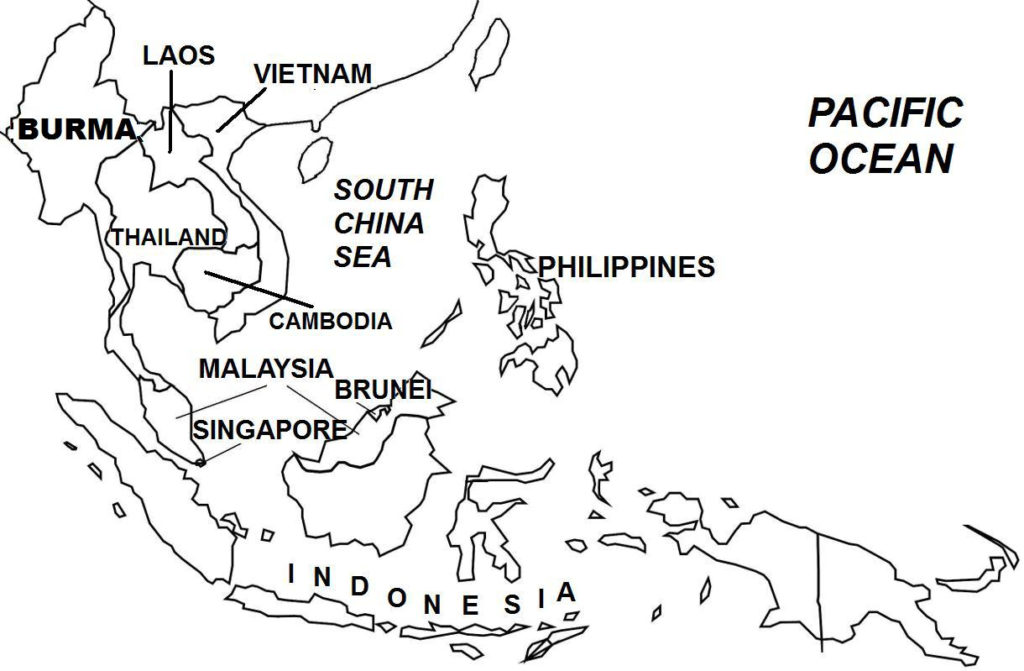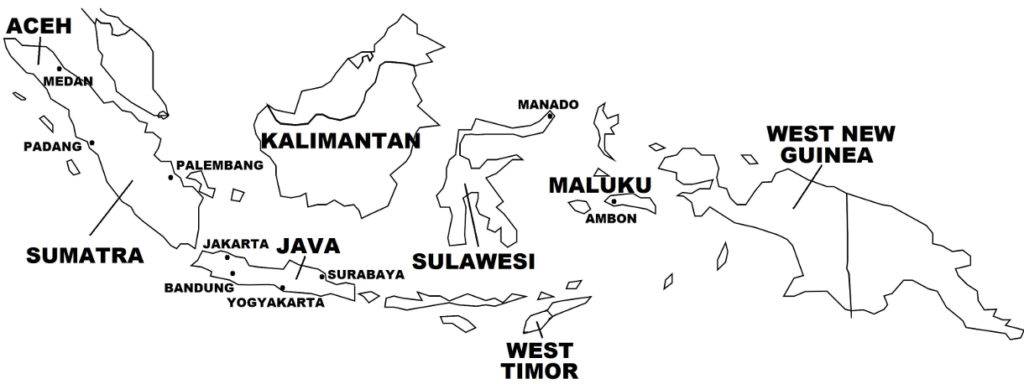On November 10, 1945, British forces and Indonesian nationalist fighters fought the Battle of Surabaya during the Indonesian War of Independence. After World War II ended, the first Allied forces arrived in the Dutch East Indies (modern-day Indonesia) in mid-September 1945. When British forces arrived in Surabaya in East Java in late October, they found that the city was fortified by Indonesian nationalist fighters – in all, some 20,000 Indonesian revolutionary troops and 100,000 militia fighters had taken defensive positions. In a skirmish on October 30, 1945, British Brigadier A.W.S. Mallaby was killed, which served as a trigger for the British to initiate full-scale fighting on November 10. Within three days, British forces had largely taken the city, but fierce house-to-house fighting continued for three weeks, with some 30,000 British troops supported with tanks, aircraft, and artillery bombardment from warships finally forcing out the last guerrilla resistance.

(Taken from Indonesian War of Independence – Wars of the 20th Century – Twenty Wars in Asia)
BackgroundSukarno’s proclamation of Indonesia’s independence de facto produced a state of war with the Allied powers, which were determined to gain control of the territory and reinstate the pre-war Dutch government. However, one month would pass before the Allied forces would arrive. Meanwhile, the Japanese East Indies command, awaiting the arrival of the Allies to repatriate Japanese forces back to Japan, was ordered by the Allied high command to stand down and carry out policing duties to maintain law and order in the islands. The Japanese stance toward the Indonesian Republic varied: disinterested Japanese commanders withdrew their units to avoid confrontation with Indonesian forces, while those sympathetic to or supportive of the revolution provided weapons to Indonesians, or allowed areas to be occupied by Indonesians. However, other Japanese commanders complied with the Allied orders and fought the Indonesian revolutionaries, thus becoming involved in the independence war.

In the chaotic period immediately after Indonesia’s independence and continuing for several months, widespread violence and anarchy prevailed (this period is known as “Bersiap”, an Indonesian word meaning “be prepared”), with armed bands called “Pemuda” (Indonesian meaning “youth”) carrying out murders, robberies, abductions, and other criminal acts against groups associated with the Dutch regime, i.e. local nobilities, civilian leaders, Christians such as Menadonese and Ambones, ethnic Chinese, Europeans, and Indo-Europeans. Other armed bands were composed of local communists or Islamists, who carried out attacks for the same reasons. Christian and nobility-aligned militias also were organized, which led to clashes between pro-Dutch and pro-Indonesian armed groups. These so-called “social revolutions” by anti-Dutch militias, which occurred mainly in Java and Sumatra, were motivated by various reasons, including political, economic, religious, social, and ethnic causes. Subsequently when the Indonesian government began to exert greater control, the number of violent incidents fell, and Bersiap soon came to an end. The number of fatalities during the Bersiap period runs into the tens of thousands, including some 3,600 identified and 20,000 missing Indo-Europeans.
The first major clashes of the war occurred in late August 1945, when Indonesian revolutionary forces clashed with Japanese Army units, when the latter tried to regain previously vacated areas. The Japanese would be involved in the early stages of Indonesia’s independence war, but were repatriated to Japan by the end of 1946.
In mid-September 1945, the first Allied forces consisting of Australian units arrived in the eastern regions of Indonesia (where revolutionary activity was minimal), peacefully taking over authority from the commander of the Japanese naval forces there. Allied control also was established in Sulawesi, with the provincial revolutionary government offering no resistance. These areas were then returned to Dutch colonial control.
In late September 1945, British forces also arrived in the islands, the following month taking control of key areas in Sumatra, including Medan, Padang, and Palembang, and in Java. The British also occupied Jakarta (then still known, until 1949, as Batavia), with Sukarno and his government moving the Republic’s capital to Yogyakarta in Central Java. In October 1945, Japanese forces also regained control of Bandung and Semarang for the Allies, which they turned over to the British. In Semarang, the intense fighting claimed the lives of some 500 Japanese and 2,000 Indonesian soldiers.
In late October 1945, the shooting death of British General Aubertin Mallaby in Surabaya prompted the British command to launch a land, air, and sea attack on the city. In this encounter, known as the Battle of Surabaya, the British met fierce resistance from Pemuda militias but gained control of the city after three days of fighting. Casualties on both sides were high, fatalities numbering 6,000-16,000 revolutionaries and 500-2,000 mostly British Indian soldiers.
In late 1945, the revolutionaries intensified their attacks in Bandung. Then in March 1946, forced by the British to withdraw from Bandung, the revolutionaries set fire to a large section of the city in what is known as the “Bandung Sea of Fire”. Also that month, communal violence broke out in East Sumatra, where elements supporting the revolutionaries attacked groups aligned with the old colonial order.
The Netherlands itself was greatly weakened by World War II, and was unable to quickly reestablish its presence in the Dutch East Indies. However, by April 1946, Dutch troops had begun to arrive in large numbers, ultimately peaking at 180,000 during the war (aside from another 60,000 predominantly native colonial troops of the Royal Dutch East Indies Army). The restored colonial government, called the Netherlands Indies Civil Administration, reclaimed Jakarta as its capital, while Dutch authority also was established in the other major cities in Java and Sumatra, and in the rest of the original Dutch East Indies.
By late 1946, the British military had completed its mission in the archipelago, that of repatriating Japanese forces to Japan and freeing the Allied prisoners of war. By December 1946, British forces had departed from the islands, but not before setting up mediation talks between the Dutch government and Indonesian revolutionaries, an initiative that led the two sides to agree to a ceasefire in October 1946. Earlier in June 1946, the Dutch government and representatives of ethnic and religious groups and the aristocracy from Sulawesi, Maluku, West New Guinea, and other eastern states met in South Sulawesi and agreed to form a federal-type government attached to the Netherlands. In talks held with the Indonesian revolutionaries, Dutch authorities presented a similar proposal which on November 12, 1946, produced the Linggadjati Agreement, where the two sides agreed to establish a federal system known as the United States of Indonesia (USI) by January 1, 1949. The Republic of Indonesia (consisting of Java, Madura, and Sumatra) would comprise one state under USI; in turn, USI and the Netherlands would form the Netherlands-Indonesian Union, with each polity being a fully sovereign state but under the symbolic authority of the Dutch monarchy.
